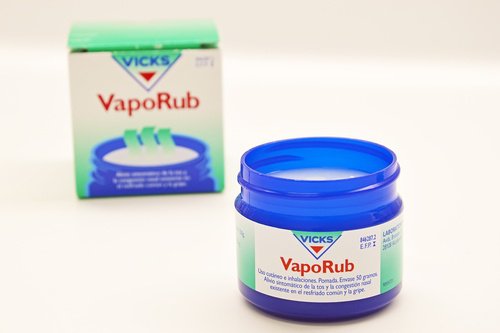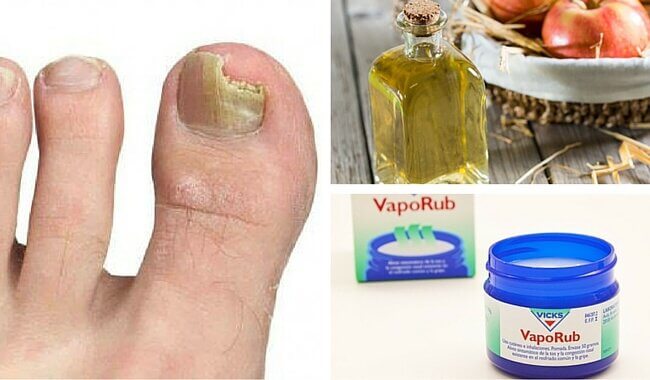우리가 소위 손발톱 무좀이라고 칭하는 질병의 과학적 이름은 조갑진균증으로 손톱 발톱에 진균이 감염되어서 생기는 증상이다. 손톱에 상처가 나거나 젖은 환경에 자주 노출되는 손톱에 감염이 쉽게 된다.
칸디다균 은 손톱을 감염시키는 가장 흔한 진균 종류의 하나로 검은색에서 초록색 혹은 일반적인 노란색으로 변색 한다. 그리고 손톱의 두께를 두껍게 한다.
증상이 심각하지 않을 때는 알지 못하고 지나가기도 한다. 하지만 감염이 진행되면 통증과 손톱 형태에 변형이 생기고 심지어는 손톱이 빠지기도 한다.
이런 형태 변형을 되돌리고 회복 속도 높이는 몇 가지 천연 해결책이 있다. 언제나 필요할 때 사용할 수 있는 6가지 간단한 천연 치료법을 나누어 살펴보려 한다.
1. 사과 식초와 과산화수소를 사용한 무좀 치료법

사과 식초와 과산화수소의 혼합물은 강력한 항진균 치료제로써 손톱과 발톱의 진균들을 제거해준다. 그 효능은 90% 소독용 알콜과 더해지면 더욱 향상된다.
재료
- 사과 식초 ¼ 컵 cup
- 과산화 수소¼
- 소독용 알코올 2 큰술 (90% 농도)
사용 방법
- 모든 재료를 유리 용기 안에 넣고 잘 저어서 몇시간 동안 둔다.
- 정해진 시간이 지나면 면솜을 용액에 적셔서 손톱에 매일 몇 차례씩 바른다.
- 이 치료를 매일 되풀이하면,금방 차이를 볼 수 있을 것이다.
2. 손톱 진균에는 마늘
마늘은 자연에서 가장 효과가 있는 항균성 물질로 손톱 진균을 치료하는데 사용할 수 잇다.
직접 발라서 사용할 수도 있으나 족욕할 때 사용하여 치료 효과를 누릴 수 있다.
재료
사용 방법
- 마늘 10쪽을 짓이겨서 물과 함께 프라이팬에 넣는다.
- 이 혼합물을 끓이면서 3분에서 5분간 우려낸 후 불을 끈다.
- 물이 사용 가능한 온도로 내려가면 발을 20분 동안 담근다.
- 이 치료를 일주일에 3회 반복한다.
3. 천연 요구르트를 사용한 무좀 치료법

천연 요구르트는 진균이 살아가는 데 필요한 환경을 바꾸는 활성 박테리아 배양할 수 있다.
재료
사용 방법
- 깨끗한 페인트 붓을 사용해서 적당한 양의 천연 요구르트를 감염된 손톱에 바른다.
- 말린 후 젖은 수건으로 깨끗이 닦아낸다.
- 이 치료를 많게는 하루에 3번씩 까지 매일 반복한다.
또한 요구르트를 식단에 넣어도 좋다. 요구르트의 유산균이 신체의 면역력을 강화해서 다른 종류의 진균 감염을 예방해준다.
4. 티트리 에센스 오일을 사용한 무좀 치료법
티트리 에센스 오일은 외부 진균 감염의 치료제로 널리 사용되고 있다.
티트리 오일의 항균, 항염, 항진균 효능이 진균의 성장을 느리게 하고 손톱의 성장을 개선해준다.
재료
사용 방법
- 티트리 에센스 오일을 상처 난 발톱에 살짝 떨어뜨리고 면솜으로 균등하게 펴 바른다.
- 며칠 안에 효과를 보고 싶다면 100% 순수 오일을 찾는다.
- 손톱이 회복될 때까지 사용한다.
5. 빅스 베이포럽

빅스사의 베이포럽은 호흡기 질환의 증상을 치료하기 위해 사용하는 연고이다.
널리 알려지지 않았지만 이 연고의 항균 효능이 진균에 감염된 손톱을 회복시키는 것을 돕는다.
재료
사용 방법
- 빅스 베이포럽을 감염된 손톱에 바르고 반창고로 덮어둔다.
- 매 6시간마다 새로운 베이포럽으로 바르고 다시 덮어둔다.
- 손톱이 나아질 때 까지 계속 반복한다.
6. 소금
주방에서 사용하는 것 말고도 소금은 손톱의 진균을 치료할 수 있는 항진균 효능이 있다.
재료
사용 방법
- 소금을 레몬즙 몇 방울로 적신 다음 감염된 손톱에 바로 바른다.
- 30분간 놔둔 후 헹군다.
- 이 치료법을 매일 반복한다.
이렇게 간단한 민간 치료법으로 진균의 성장을 막고 손톱의 손상을 예방하라 수 있다.
증상이 완화될 때까지 시간이 걸릴 것이다. 하지만 지속적으로 치료법을 사용했을 때 분명환 효과를 볼 수 있을 것이다.
참고 문헌
모든 인용된 출처는 품질, 신뢰성, 관련성 및 유효성을 보장하기 위해 저희 팀이 철저히 검토했습니다. 이 글의 참고 문헌은 신뢰할 수 있으며 학문적 또는 과학적 정확성을 갖춘 것으로 간주되었습니다.
- Alessandrini, A., Starace, M., Bruni, F., & Piraccini, B. M. (2020). An Open Study to Evaluate Effectiveness and Tolerability of a Nail Oil Composed of Vitamin E and Essential Oils in Mild to Moderate Distal Subungual Onychomycosis. Skin appendage disorders, 6(1), 14–18. https://pubmed.ncbi.nlm.nih.gov/32021856/
- American Academy of Dermatology. (s.f.). Nail fungus: Diagnosis and treatment. Consultado el 28 de mayo de 2023. https://www.aad.org/public/diseases/a-z/nail-fungus-treatment
- Bodman MA, Krishnamurthy K. (2022, 22 de agosto). Onychomycosis. StatPearls Publishing. Consultado el 28 de mayo de 2023. https://www.ncbi.nlm.nih.gov/books/NBK441853/
- Derby, R., Rohal, P., Jackson, C., Beutler, A., & Olsen, C. (2011). Novel treatment of onychomycosis using over-the-counter mentholated ointment: a clinical case series. Journal of the American Board of Family Medicine: JABFM, 24(1), 69–74. https://pubmed.ncbi.nlm.nih.gov/21209346/
- Gopal, J., Anthonydhason, V., Muthu, M., Gansukh, E., Jung, S., Chul, S., & Iyyakkannu, S. (2019). Authenticating apple cider vinegar’s home remedy claims: antibacterial, antifungal, antiviral properties and cytotoxicity aspect. Natural product research, 33(6), 906–910. https://pubmed.ncbi.nlm.nih.gov/29224370/
- Ghannoum, M., & Isham, N. (2014). Fungal nail infections (onychomycosis): a never-ending story? PLoS pathogens, 10(6), 1-5. https://www.ncbi.nlm.nih.gov/pmc/articles/PMC4047123/
- Hicks MA, Tyagi A. (2022, 8 de mayo). Magnesium Sulfate. StatPearls Publishing. Consultado el 28 de mayo de 2023. https://www.ncbi.nlm.nih.gov/books/NBK554553/
- Letscher-Bru, V., Obszynski, C. M., Samsoen, M., Sabou, M., Waller, J., & Candolfi, E. (2013). Antifungal activity of sodium bicarbonate against fungal agents causing superficial infections. Mycopathologia, 175(1-2), 153–158. https://pubmed.ncbi.nlm.nih.gov/22991095/
- Leon, B. R., Romary, D. J., Landsberger, S. A., Bradner, K. N., Ramirez, M., & Lubitz, R. M. (2022). Risks of ozonated oil and ozonated water on human skin: A systematic review. International Wound Journal, 19(7), 1901-1910. https://onlinelibrary.wiley.com/doi/full/10.1111/iwj.13760
- Leung, A. K. C., Lam, J. M., Leong, K. F., Hon, K. L., Barankin, B., Leung, A. A. M., & Wong, A. H. C. (2020). Onychomycosis: An Updated Review. Recent patents on inflammation & allergy drug discovery, 14(1), 32–45. https://www.ncbi.nlm.nih.gov/pmc/articles/PMC7509699/
- Mercy, K. A., Ijeoma, I., & Emmanuel, K. J. (2014). Anti-dermatophytic Activity of garlic (Allium sativum) extracts on some Dermatophytic fungi. International Letters of Natural Sciences, 19,1-7 https://agro.icm.edu.pl/agro/element/bwmeta1.element.agro-b6d889ef-a1bb-4027-bacd-1468469c740a
- Nasrollahi, Z., & Abolhasannezhad, M. (2015). Evaluation of the antifungal activity of olive leaf aqueous extracts against Candida albicans PTCC-5027. Current medical mycology, 1(4), 37–39. https://pubmed.ncbi.nlm.nih.gov/28681003/
- Pârvu, M., Moţ, C. A., Pârvu, A. E., Mircea, C., Stoeber, L., Roşca-Casian, O., & Ţigu, A. B. (2019). Allium sativum Extract Chemical Composition, Antioxidant Activity and Antifungal Effect against Meyerozyma guilliermondii and Rhodotorula mucilaginosa Causing Onychomycosis. Molecules (Basel, Switzerland), 24(21), 1-16. https://www.ncbi.nlm.nih.gov/pmc/articles/PMC6865177/
- Romero-Cerecero, O., Zamilpa, A., Jiménez-Ferrer, J. E., Rojas-Bribiesca, G., Román-Ramos, R., & Tortoriello, J. (2008). Double-blind clinical trial for evaluating the effectiveness and tolerability of Ageratina pichinchensis extract on patients with mild to moderate onychomycosis. A comparative study with ciclopirox. Planta medica, 74(12), 1430–1435. https://pubmed.ncbi.nlm.nih.gov/18671197/
- Singh, M., Alka, Lee, K. E., Kumar, P., & Kang, S. G. (2021). Curcuma Turmeric Oil Enhanced Anti-Dermatophytic Drug Activity Against Candida albicans and Trichophyton mentagrophytes. Current drug delivery, 18(10), 1494–1504. https://pubmed.ncbi.nlm.nih.gov/34325638/
- Snell, M., Klebert, M., Önen, N. F., & Hubert, S. (2016). A novel treatment for onychomycosis in people living with HIV infection: Vicks VapoRub™ is effective and safe. Journal of the Association of Nurses in AIDS Care, 27(1), 109-113. https://journals.lww.com/janac/Citation/2016/01000/A_Novel_Treatment_for_Onychomycosis_in_People.13.aspx
- Ugazio, E., Tullio, V., Binello, A., Tagliapietra, S., & Dosio, F. (2020). Ozonated Oils as Antimicrobial Systems in Topical Applications. Their Characterization, Current Applications, and Advances in Improved Delivery Techniques. Molecules (Basel, Switzerland), 25(2), 334. https://www.ncbi.nlm.nih.gov/pmc/articles/PMC7024311/
- Wu, Y., Hu, S., Wu, C., Gu, F., & Yang, Y. (2022). Probiotics: Potential Novel Therapeutics Against Fungal Infections. Frontiers in cellular and infection microbiology, 11, 1-6. https://www.ncbi.nlm.nih.gov/pmc/articles/PMC8813855/
- Wróblewska, M., Szymańska, E., & Winnicka, K. (2021). The Influence of Tea Tree Oil on Antifungal Activity and Pharmaceutical Characteristics of Pluronic® F-127 Gel Formulations with Ketoconazole. International journal of molecular sciences, 22(21), 1-22. https://www.ncbi.nlm.nih.gov/pmc/articles/PMC8582737/
- Zubko, E. I., & Zubko, M. K. (2013). Co-operative inhibitory effects of hydrogen peroxide and iodine against bacterial and yeast species. BMC research notes, 6, 1-7. https://www.ncbi.nlm.nih.gov/pmc/articles/PMC3716994/




